The Streak Continues: 144
I published this post at 6:00am Amsterdam time; that is noon on the east coast. We enjoyed a great morning at Keukenhof and then had too much fun photographing the windmills and Great Crested Grebes at Kinderdijk.
This post marks 144 straight days with a new blog post. With so many folks getting in the habit of using our B&H links and our Amazon logo-links why quit now? To show your appreciation for my efforts here, we do ask that you use our the B&H and Amazon affiliate links on the right side of the blog for all of your purchases. Please check the availability of all photographic accessories in the BIRDS AS ART Online Store, especially Gitzo tripods, Wimberley tripod heads, and the like. We sell only what I used, tested, and can depend on. We will not sell you junk. We know what you need to make creating great images easy and fun. And we are always glad to answer your gear questions via e-mail.
You can find the following items in the store: Gitzo tripods, Mongoose M3.6 and Wimberley heads, plates, low feet, and accessories, flash brackets, , Delkin e-film Pro Compact Flash Cards, LensCoat products, and our unique line-up of educational materials including ABP I & II, Digital Basics, Site and Set-up e-Guides, Canon and Nikon Camera Users and AF e-Guides, and MP-4 Photoshop video tutorials among others.
I would of course appreciate your using our B&H affiliate links for all of your major gear, video, and electronic purchases. For the photographic stuff mentioned in the paragraph above we, meaning BAA, would of course greatly appreciate your business. Here is a huge thank you to the many who have been using our links on a regular basis and visiting the BAA Online store as well.
This blog post took 2 hours to put together. Enjoy!
|
This Cattle Egret image was created with the then-equivalents of the Gitzo 3532 LS carbon fiber tripod and the Mongoose M3.6 head. I used the Canon 500mm f/4L IS (now replaced by the Canon EF 500mm f/4L IS II USM lens, the 1.4X III TC now replaced by the Canon Extender EF 1.4X III, and the EOS 1Ds Mark II now replaced by the Canon EOS-1D X. ISO 400. Evaluative metering +2/3 stop as framed: 1/160 sec. at f/7.1 in Av mode. Color temperature: AWB. Fill flash with Better Beamer at -2 stops in ETTL with an older Canon Speedlight now replaced by the Canon Speedlite 600EX-RT with the Canon CP-E4 Compact Battery Pack for faster re-charging times. Mongoose Integrated Flash Arm with the Canon OC-E3 Off Camera Shoe Cord 3. One-Shot AF on the bird’s eye and re-compose. Click on the image to see a larger version. Image #1: Looking Up
|
One of My Very Favorite Wading Bird Species
One of my very favorite wading bird species is Cattle Egret. They are handsome even in their winter or non-breeding garb but when they are decked out in full breeding plumage they are a sight to be seen with their rich buff crests and all that magenta, cherry red, and yellow on or around their faces and those bright pink legs and feet. St. Augustine Alligator Farm in early May is prime time for photographing this species which usually begins nesting much later than Snowy and Great Egrets and the Tricolored Herons. There is a good chance that the Snowy Egrets will have chick in the nest. The Great Egrets will have both large and fledged chicks.
Image Question
What is the single-most distracting element in this image?
|
This Cattle Egret image was also created with the then-equivalents of the Gitzo 3532 LS carbon fiber tripod and the Mongoose M3.6 head. Again, I used the Canon 500mm f/4L IS (now replaced by the Canon EF 500mm f/4L IS II USM lens, the 1.4X III TC now replaced by the Canon Extender EF 1.4X III, and the EOS 1D s Mark II now replaced by the Canon EOS-1D X. ISO 500. Evaluative metering +2/3 stop in very low light as framed: 1/80 sec. at f/5.6 in Av mode. Color temperature: AWB. One-Shot AF on the bird’s eye and re-compose. Click on the image to see a larger version. Image #2: Handsome Vertical
|
Relatively Distant Backgrounds
As we saw at Keukenhof this morning using a longer lens with a teleconverter and searching for tulips with relatively distant backgrounds, from 2 to ten feet or so behind an individual flower is a great way to isolate your subjects against clean backgrounds. And that is just what I did here. Though it has been a very years since I visited St. Augustine, one of the things that I always liked about it was that there were always a lot more isolated perches there than at Gatorland….
|
This Cattle Egret flash flight image was created with the hand held Canon EF 400mm f/4 DO IS USM Lens and the EOS 1Ds Mark II now replaced by the Canon EOS-1D X. ISO 400. Evaluative metering +2/3 stop as framed: 1/160 sec. at f/7.1 in Av mode. Color temperature: AWB. Quasi High Speed Synch flash as main light with Better Beamer at +1/3 stop in ETTL with an older Canon Speedlight now replaced by the Canon Speedlite 600EX-RT with the Canon CP-E4 Compact Battery Pack for faster re-charging times. Mongoose Integrated Flash Arm with the Canon OC-E3 Off Camera Shoe Cord 3. Central sensor AI Servo AF active at the moment of exposure. Click on the image to see a larger version. Image #3: White Sky Flight
|
White Sky Flight
I love using flash on white sky days or at dusk for flight photography. When you get a good one it can look like a studio shot. Join us on the St. Augustine Alligator Farm and learn how to create images like this, and to avoid the clutter of rookeries….
Your Favorite?
Please take a moment to leave a comment and let us know which of today’s 3 images you like best. And be sure to let us know why.
Canon Gear for Sale
Doug Bolt is offering a used Canon 400mm f/4L IS DO lens in very good to excellent condition for $4599. The sale includes the lens trunk and lens cover; the seller will pay shipping to US addresses only. This one should sell in minutes to someone looking for a lightweight super-telephoto. The item will ship only when the check clears.
Please contact Doug for additional info and/or a link to photos via e-mail or try him by phone at home: at 301-937-3112 or on his cell at 301-537-8073.
Doug is also offering a used EOS-5D Mark II in very good to excellent condition for $1199. There is a shallow scratch on the body and a faint smudge on the top LCD. The sale includes a RRS L-plate, a vertical grip, and the original box and all the stuff that came in it. The seller will pay shipping to US addresses only. This one is a great body for flowers and landscapes. Mine saved me on a Southern Oceans cruise when I trashed two EOS-1D Mark IV bodies in a rainstorm; it was a great back-up camera body. The item will ship only when the check clears.
Again, please contact Doug for additional info and/or a link to photos via e-mail or try him by phone at home: at 301-937-3112 or on his cell at 301-537-8073.
|
All of the images created at the St. Augustine Alligator Farm and copyright Arthur Morris/BIRDS AS ART From top left clockwise to center: Snowy Egret pair in breeding plumage, breeding plumage Cattle Egret with fill flash, large Great Egret chicks in the nest, killer breeding plumage Snowy Egret displaying, flash-as-main light Great Egret chick happy to see mom, Little Blue Heron chicks, Cattle Egret breeding plumage head portrait, flash flight Wood Stork with nesting material, Great Egret landing at the nest, large Snowy Egret chicks. Click on the image to enjoy a larger version. |
St. Augustine Alligator Farm Short-Notice IPT. 3-FULL DAYS. Early entry/Late stay. May 5-7, 2014. Meet and greet at 8pm on Sunday May 4: $1299. Two Great Leaders: Arthur Morris and Denise Ippolito
This trip needs four to run.
Breeding herons, egrets, and Wood Storks. Eggs and chicks in the nest. Some fledged young possible. Breeding behaviors including displaying and copulations. Flight and flash flight. Great Egret, Snowy Egret, Little Blue Heron, Cattle Egret, Tricolored Heron, Wood Stork. Early May rocks at the Farm as the weather is usually gorgeous and there should be lots of both small and large chicks in the nest. And you avoid the possibly oppressive heat of June and July.
Includes in-the-field instruction, early entry, late stay, $5/person late-stay gratuity, informal, small group Photoshop and image review sessions. Three lunches.
Not included: your lodging, your St. Augustine Alligator Farm photographer’s pass ($79.95 for the year); we will be more than glad to pre-order your pass for you. Please let us know when you register.
What you will learn:
How to see the good situations.
How to best avoid the clutter of a rookery by choosing the very best perspective.
How to properly evaluate the histogram and come up with the right exposure every time after making a single test exposure
How to see and understand the light.
How to to design pleasing images by mastering your camera’s AF system.
Why you must work in Manual mode 95% of the time when photographing at a rookery and how to do it.
How to evaluate and process your images.
Via intensive instruction how to use fill flash flash as main light, and Manual flash.
Flash flight techniques including the necessary use of high speed sync.
And tons more.
Please call Jim or Jen at 863-692-0906 to hold your spot with your non-refundable $299 credit card deposit and then put your check in the mail along with your signed registration form; you can find the form here.
Suitable airports: Jacksonville (JAX), Daytona Beach (DAB), Orlando MCO).
We look forward to seeing you in the nation’s oldest city for three days of fun and learning.
|
Join me at Gatorland for a ton of learning. If you want to learn to use your flash, you will not want to miss this one. Click on the composite image to enjoy a larger version. Click on the composite to enjoy the larger size. |
The Gatorland Short Notice Saturday Full-Day In-the-Field Workshop
Saturday May 3, 2014. 7:15am till 10:15am & 4:00pm till dusk. Lunch, image review, and Photoshop session included. Limit 6. A very small group is again likely: $399.
The cost of your Gatorland Photographer’s Pass is not included.
Chicks in nests likely. Breeding plumage Cattle and Snowy Egrets. And tons more. You will learn to spot the good situations, to choose the best perspective, to see and understand the light, to get the right exposure every time after making a single test exposure, and to design pleasing images by mastering your camera’s AF system. A big part of the above is that you will learn how and why you must work in Manual mode 90% of the time at Gatorland.
At lunch we will review my images, take a look at five of your best images from the morning session (for those who opt to bring their laptops), and process a few of my images in Photoshop after converting them in DPP. That followed by Instructor Nap Time. Last Saturday all 3 folks had a great time and learned a ton.
Payment in full via credit card is due upon registering. Please call Jim or Jennifer at 863-692-0906 to register.
Support the BAA Blog. Support the BAA Bulletins: Shop B&H here!
We want and need to keep providing you with the latest free information, photography and Photoshop lessons, and all manner of related information. Show your appreciation by making your purchases immediately after clicking on any of our B&H or Amazon Affiliate links in this blog post. Remember, B&H ain’t just photography!
….. …..
Typos
In all blog posts and Bulletins, feel free to e-mail or to leave a comment regarding any typos, wrong words, misspellings, omissions, or grammatical errors. Just be right. 🙂

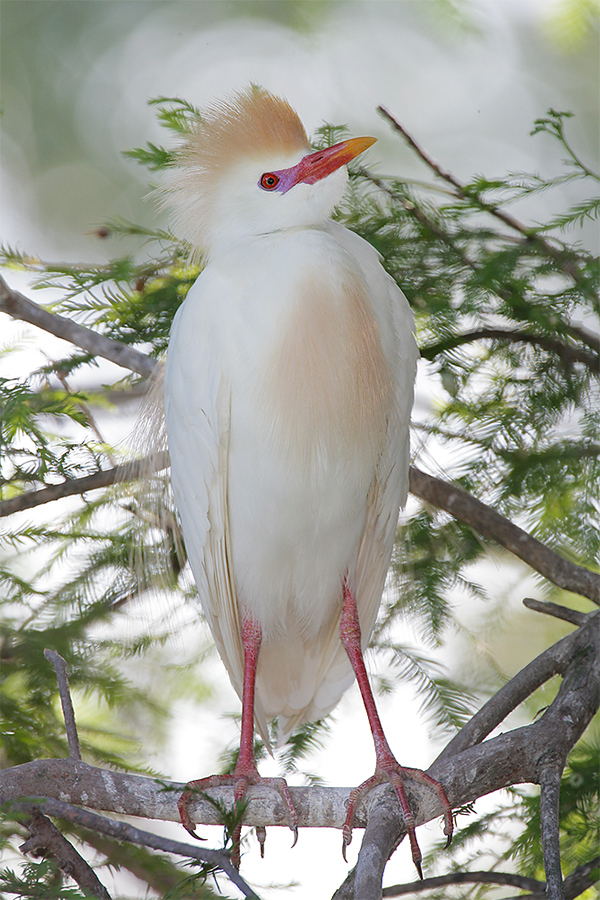
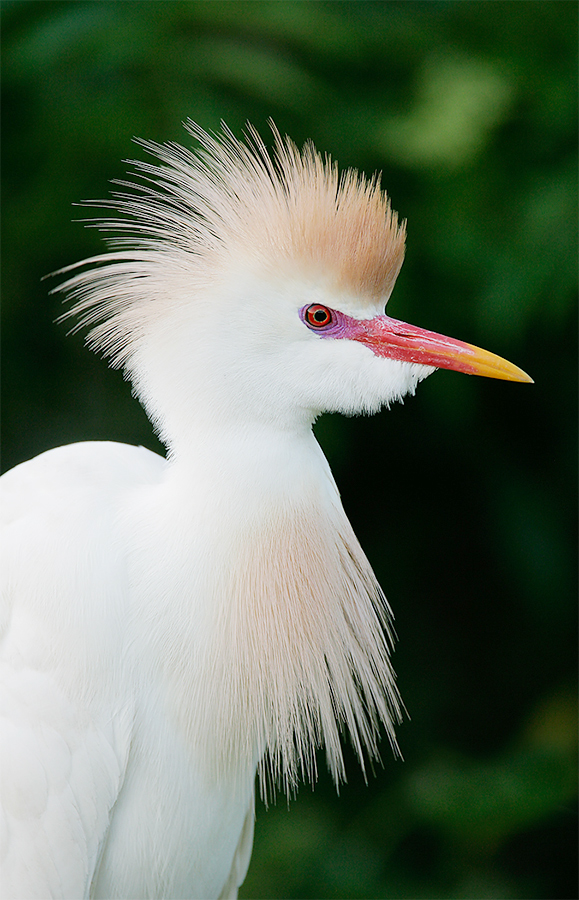
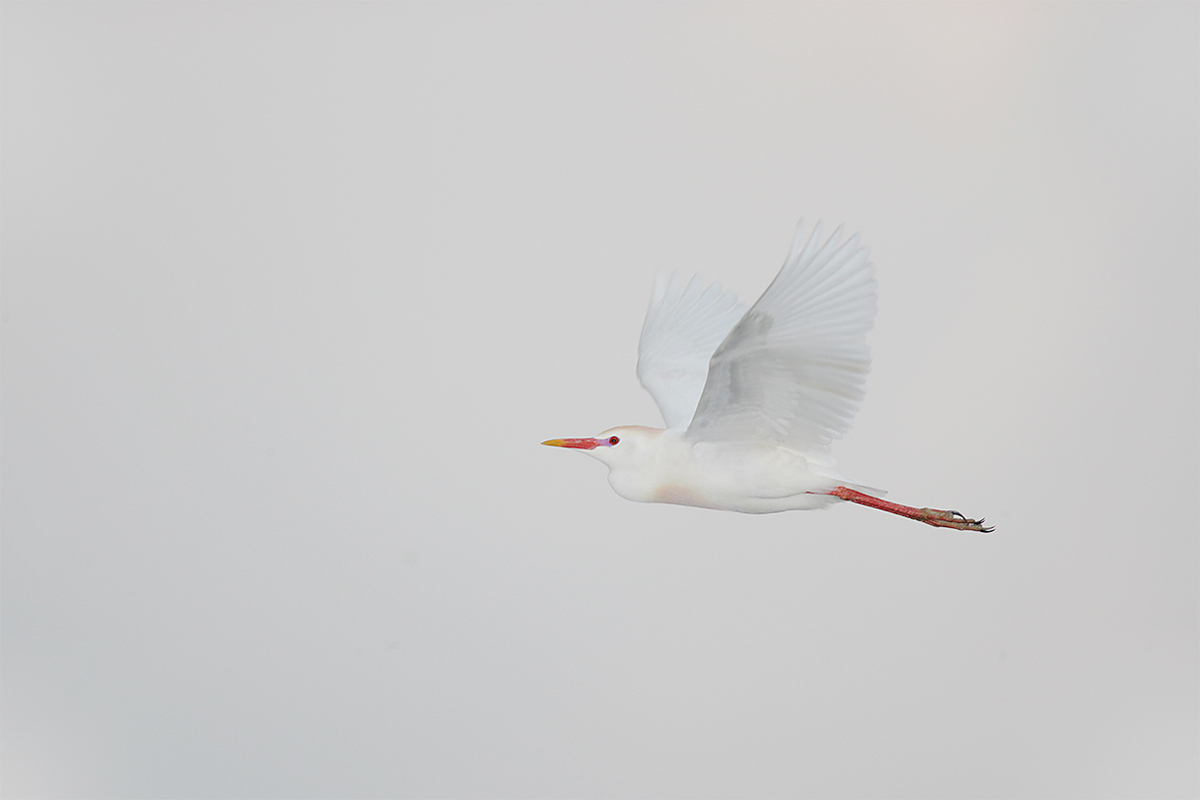
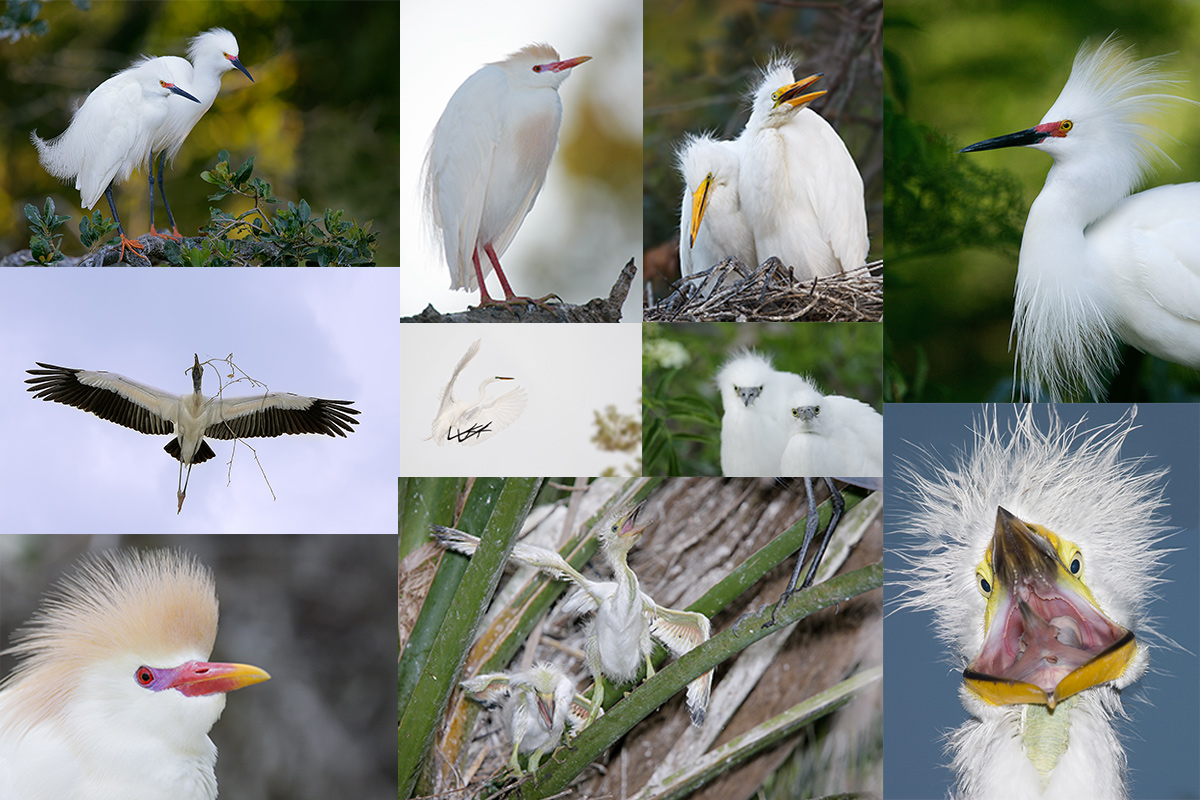
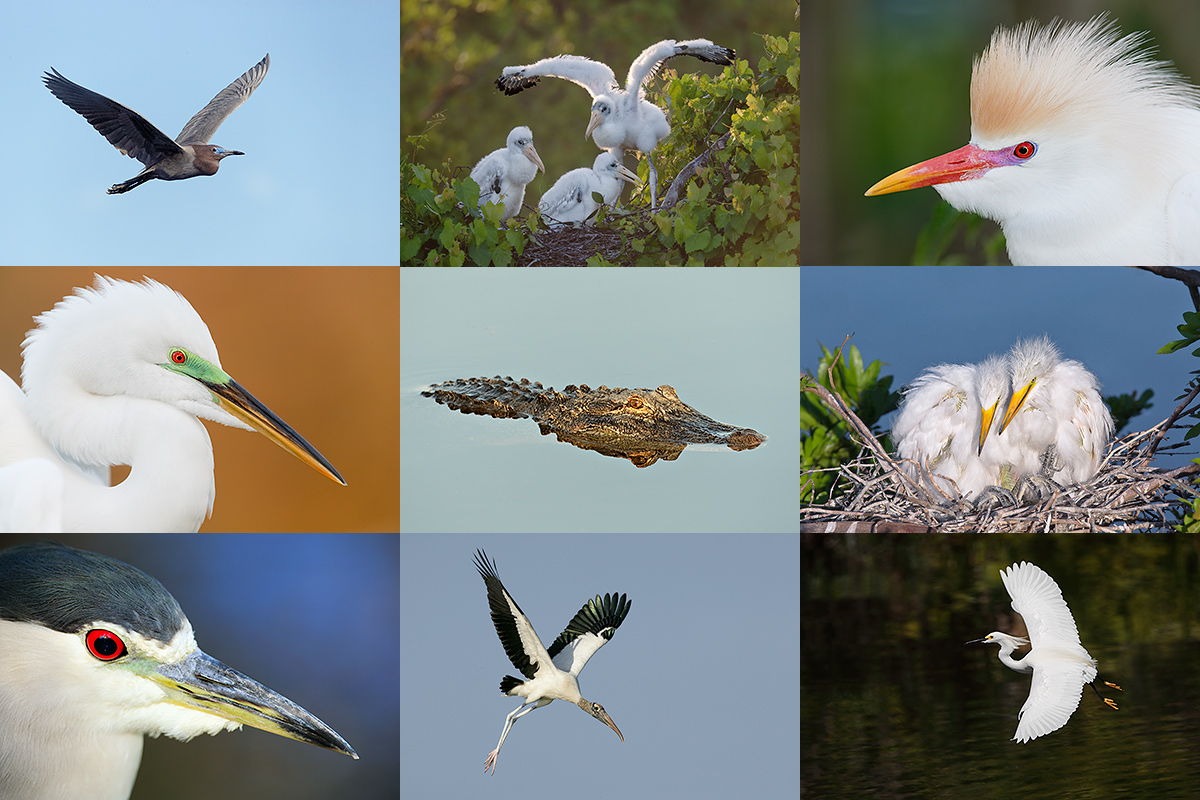













The wading bird is not wading.
ps…
I forgot to mention…
I just love this guy! (Image #1)..
What a great capture of this character…
Makes me smile!
Me too. a
Re Conrad,
If you are from North America then a Cattle Egret is a wading bird or wader. If you are European however a Cattle Egret is not a wader, its a heron. In Europe a wader is what North Americans call shorebird.
There you go, clear as mud. Two cultures separated by a common language
Colin, You are on the right track, and yes, different languages use different terms. But in North America nobody who knows what they are doing would using wading bird and wader interchangeably…. artie
In the first image, there’s a white bird that gets in the way of all the branches and leaves. 🙂 For me, in the first image, it’s a tie between the stick to the right of the bird’s head and the dark swirl behind its head. 16 more consecutive blogs and you’ll have a full baseball season’s worth.
It’s the stick. Otherwise I think that it is a fine image 🙂 artie
It’s a tough one, but I’d say head angle. It’s kind of tough to tell with all the white, but judging by the eye, either it’s horizontal or just a smidge looking away. Doug
HA is fine for me 🙂 artie
I believe you are referring to the second image. Even if you are not please fix the light green shape above the head that look like a pipe.
Well done. If I optimized this image today, I would surely deal with the light area. artie
Well first, Wow! I love that shot and the second one as well. Gorgeous colors and the posture of the bird with that perspective, so nice. But yes, I didn’t notice it before the question, but the distraction would be that up-shooting twig in the upper right close to the beak. Given the complexity of the exposure, I’m not taking issue with the bokeh. I don’t mind the foliage around the head either (even though an argument could be made that it fights with the head plummage) because I like the color and the contrast it provides.
Thanks for your kind words. Good job on the stick 🙂 artie
If it is the 1st image, the green leaves growing from the bird’s head….if the second image, maybe it is the bright spot just over the bill…..I love all images and while I am used to seeing Cattle Egrets along the roads, I have never seen one up close like these….
Thanks. The stuff that you mentioned does not bother me. Where do you live? You should consider coming down for the St. Augustine IPT :). artie
Not sure which image you were asking about… So here’s my 2cent on both…
Image #1: Either: Branch just above beak.. (….as pointed out by Elinor) or heavy branch(es) behind egret cutting through its middle;
Image #2: Bright white spot, in the background, above egret’s head… (…Kevin…);
The only thing that really bugged me is Elinor’s stick 🙂. artie
I think it’s the leaves covering the bird’s right foot…
Thanks for commenting. Those do not bother me. artie
To me, it’s the thin stick that ends up just above the bill.
As always, it’s hard to choose, but maybe the flying egret. It looks like artwork with the dark edges on the bird.
Thanks, and yes to that distracting stick. artie
Yes, its the funny bokeh behind the head plus the few leaves behind the crest. I did not know that a Cattle Egret is classified as a wading bird.. Is that correct?
Thanks for commenting. That does not bother me. And yes, as noted elsewhere here, all NA herons and egrets are informally known as wading birds. artie
Good afternoon Artie
It would be the bright white spot to the top right of the head. Your eye is drawn to this area.
Thanks for commenting. That does not bother me. artie